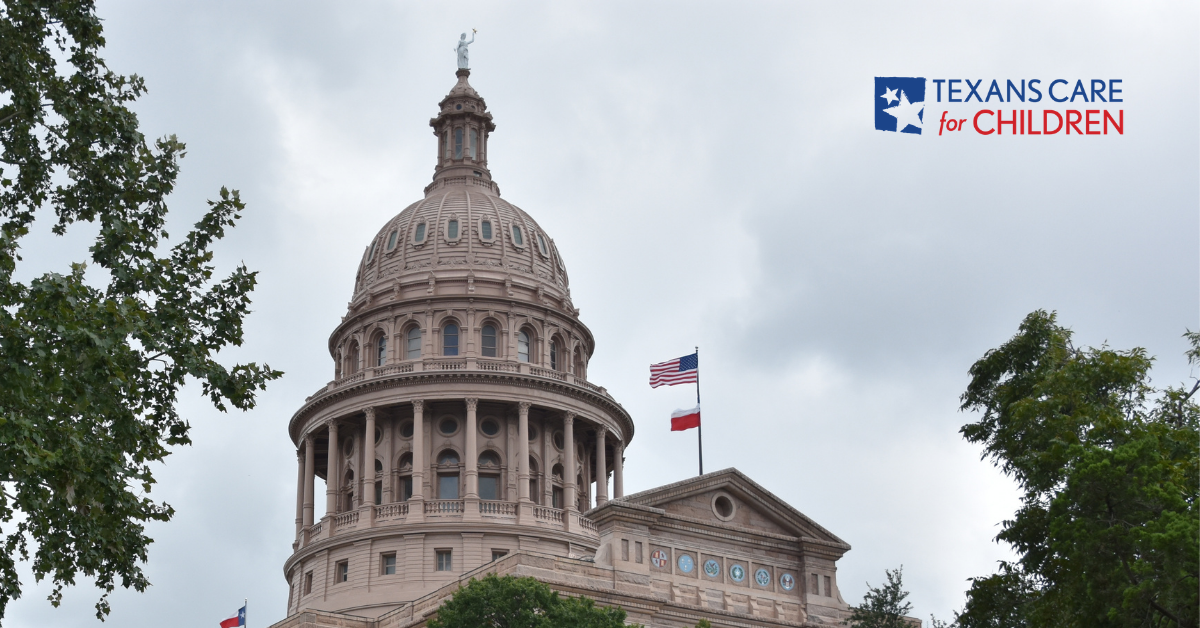This commentary originally appeared in the San Antonio Express-News.
Heading into the 2021 Texas legislative session in January, kids in foster care — and kids at risk of experiencing abuse and neglect and then entering foster care — needed state policymakers to make them a priority.
For years, federal court monitors documented the dangers that Texas kids face when Child Protective Services removes them from unsafe homes and places them in foster care. Then a newer problem — the COVID-19 pandemic — increased the risk of abuse or neglect and entering foster care. It also worsened the ongoing shortage of appropriate homes and services for children in foster care.
The good news is the Legislature made headway in key areas, thanks to the leadership of Sens. Lois Kolkhorst, Beverly Powell and José Menéndez, and Reps. James Frank, Jarvis Johnson, Ina Minjarez and others.
Children staying in group facilities designated as qualified residential treatment programs, or QRTPs, and potentially children in other facilities, will be transferred more quickly to homes with families.
State officials now have instructions to develop more foster homes prepared to serve pregnant and parenting youth and trafficking survivors. Lawmakers passed important legislation to support older youth in foster care, including bills helping them lock in their college tuition waiver, ensuring continuous legal representation for youth in foster care, and allowing 17-year-olds in foster care to administer — and therefore better understand — their own medication when it is safe. Additionally, leveraging the federal Family First Act, the Legislature funded pilot programs to work with families that are already involved with CPS, aiming to keep kids safe and out of foster care.
We were also glad to see that some harmful bills did not pass, such as proposals to eliminate anonymous reporting to CPS, criminalize traumatized youth who are resistant to their foster care placements and separate transgender youth from loving parents, potentially driving them into foster care.
There’s also some bad news from the session. The foster care system relies on nonprofits and other providers to operate homes for children with complex needs, recruit foster parents, offer mental health treatment and deliver other services. One of the big reasons there is a shortage of safe and effective homes and services is the inadequate payments offered to these providers. Yet the Legislature failed to increase the reimbursement rates for providers, potentially exacerbating the shortage and undermining good bills that passed. Legislators also failed to boost funding for services that keep kids out of the CPS system by preventing abuse and neglect. Additionally, lawmakers neglected to pass a key bill aimed at reducing racial disproportionality and disparities in the CPS system.
Alongside the good and bad news is a big question mark: Are legislative leaders pinning too much hope on the unsupported belief that community-based care, or CBC, is the answer to all the system’s problems? We fear the answer may be “yes.”
Under the CBC model, a local organization, rather than state officials, takes the lead on foster care in a particular region. The evidence suggests CBC contractors struggle to outperform the “legacy system.” The San Antonio nonprofit Family Tapestry, which recently announced the termination of its contract with the state, is the latest CBC contractor to fall short. We expect CBC contractors to continue to struggle to meet children’s needs, especially in light of the Legislature’s failure to increase reimbursement rates for foster care providers. Nonetheless, the Legislature charged ahead with CBC this session, investing significant money in further expanding the model when it may have been prudent to slow the rollout and ensure we are equipping community providers to succeed.
As we step back to consider all the Legislature’s work this session to address the CPS system, we’re cautiously optimistic that Texas is largely pointed in the right direction. Legislators are focusing on keeping children safe with their families and out of foster care when possible. For kids who do enter foster care, legislators are working to ensure they can heal and thrive.
Yet there are significant challenges ahead for the Texas child protection system — and a real possibility it will worsen for many kids before it gets better. The governor could give lawmakers another chance to get ahead of those challenges by including foster care rates in the Legislature’s upcoming special session to ensure there are enough safe and effective homes and services for kids who are removed from their families. We urge the governor and legislators to seize that opportunity to build on the important steps from this session.


